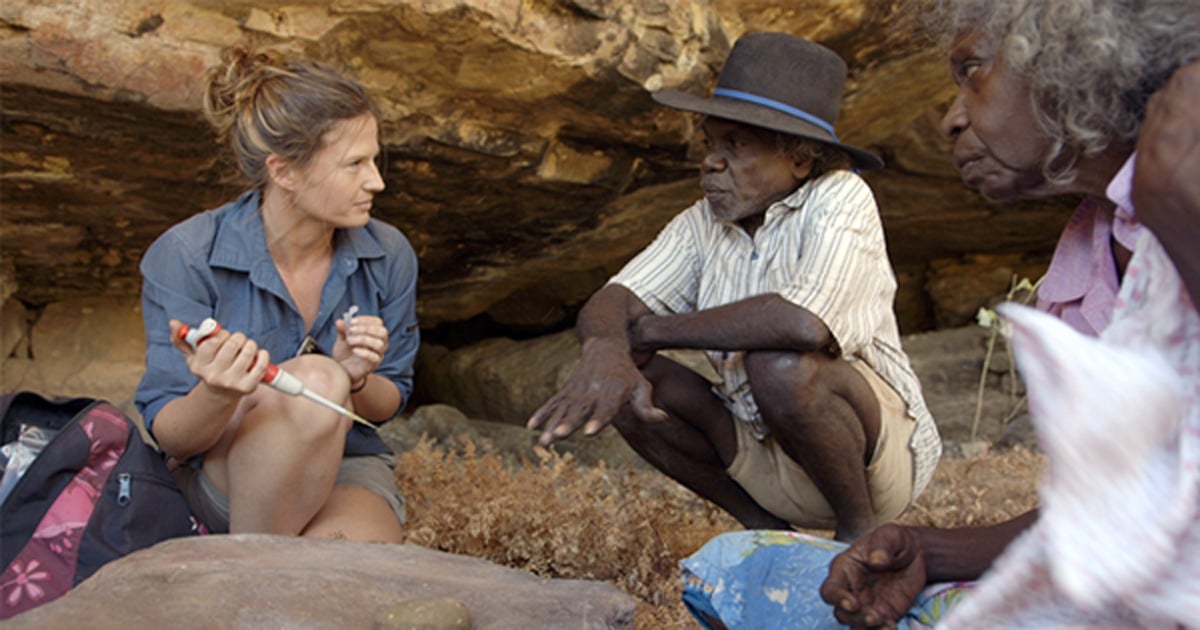New Findings in Australia Have Shocking Ramifications for Human Occupation, Species Extinction and Out of Africa Theories
A group of archaeologists in Australia has discovered the world's oldest stone axes with a ground edge. This discovery is extremely significant as it pushes Australia's human history back to 65,000 years, almost 18,000 years earlier than archaeologists previously estimated. This change of date is massively significant as it directly challenges current evolution and migration timelines across the world and so, as the research team notes, has ‘universal importance’.
Settlement of Madjedbebe Declared of Universal Significance
When the team of archaeologists was unearthing the ancient artifacts from an indigenous rock shelter called Madjedbebe (near Kakadu National Park in Australia), none of the participants could ever imagine the immense archaeological significance of their findings. Located 300 kilometers east of Darwin in Mirarr Country, the Madjedbebe rock shelter sits at the base of the Arnhem Land escarpment on a sandy plain. The researchers unearthed a respectable number of artifacts, including the world's oldest-known ground-edge axe head, one made by grinding rather than flaking. Chris Clarkson from the University of Queensland and leader of the research, stated as The Independent reported, “The site contains the oldest ground‐edge stone axe technology in the world, the oldest known seed grinding tools in Australia and evidence of finely made stone points which may have served as spear tips.”
- An Ancient Australian Connection to India?
- Aboriginal languages could reveal scientific clues to Australia’s unique past
- New Research May Establish Australian Rock Art as the Oldest in the World

An edge-ground axe head being uncovered. Credit: Chris Clarkson / Gundjeihmi Aboriginal Corporation
Interestingly, many scientists already view Madjedbebe, as home to the earliest evidence of humans in Australia as Phys Org reports. Writing in the journal Nature, the researchers referred to the settlement of Madjedbebe as of “universal importance” and called for it to receive the “highest level of conservation and protection.”
Dispute Appears to be Over
The site was last excavated back in the 1980s. Back then it was believed to be between 50,000 and 60,000 years old. However, these dates had been disputed by several archaeologists and in order to settle the dispute for once and for all, Dr. Clarkson and his colleagues returned to the site in 2012 and 2015, armed with more advanced technology and techniques this time. Excavation at the site took place only after the local Gundjeihmi Aboriginal Corporation representing the traditional owners, gave permission to the researchers.

Chris Clarkson and May Nango. Credit: Dominic O Brien/Gundjeihmi Aboriginal Corporation
Next, as Phys Org mentions, labs in Australia used a combination of radiocarbon dating and a technique called luminescence dating (to examine the newly found artifacts), which can show accurately when single grains of sand were last exposed to sunlight, to determine the age of the sediment surrounding the artifacts. The results indicated the lower layers were around 65,000 years old, changing the original date significantly. To be sure that the dates were correct, Professor Jacobs of the University of Wollongong sent four samples to the University of Adelaide for independent testing. The results were the same as ABC News reports.

Axes and grinding stones from the Pleistocene found in the excavations. Credit: Dominic O Brien/Gundjeihmi Aboriginal Corporation
- Written in Stone: Neolithic Weapons and Tools of the Australian Aboriginals
- Unravelling the Ancient Origins of Australia
- New Study says early humans migrated into Europe due to warming climate
How History Could Be Reshaped
So what do all these new findings and dates mean for mankind’s history? The article published yesterday in the journal Nature, points out clearly that the modern dating techniques could shed light on the emergence of early humans and their coexistence with ancient wildlife on the Australian continent. The question is: Could this discovery truly reshape history? The answer is yes!

Ben Marwick explaining the dig site to visitors. Credit: Dominic O Brien/Gundjeihmi Aboriginal Corporation
Ben Marwick co-author of the article in Nature and UW associate professor of anthropology, explains how the new discovery could make a difference and reshape history as we know it today,
"Previously it was thought that humans arrived and hunted them [sic. megafauna] out or disturbed their habits, leading to extinction, but these dates confirm that people arrived so far before that they wouldn't be the central cause of the death of megafauna," he said as Phys Org reports.
And continues, "It shifts the idea of humans charging into the landscape and killing off the megafauna. It moves toward a vision of humans moving in and coexisting, which is quite a different view of human evolution."
Ultimately, the findings also indicated that Homo sapiens' predecessors, Neanderthals and Denisovans, coexisted with humans for much longer than we originally thought, since the new research pretty much suggests that Australia was occupied almost 20,000 years before the first humans arrived in Europe. This shows a much more important role for Australia in the shaping of human history. The research is expected to receive a lot of criticism since the scientific topics of discussion it opens are too many and too important.
Top image: Researcher Elspeth Hayes with Mark Djandjomerr and traditional owner May Nango extracting comparative samples at a cave adjacent Madjedbebe. Credit: David Vadiveloo / Gundjeihmi Aboriginal Corporation


















Comments
Good luck with this. First off, there is no control "rock" to compare or calibrate this equipment. All kinds of manufactured nonsense seems to be occurring lately and it's getting worse. Especially in the areas of mankind's origins. Evolution is the biggest one. Scientific research is one thing as in experiments. Forming conclusions based on soft evidence is embarrassing to say the least.
Sir Clerke
I have wanted to subscribe for years. Now I have time
now is the time. thank you for all your research, writings, truth telling and relating history for the lay person.